All About Termites and Clean Up with The Bagster Bag
There we were, Harvey the electrician and I were happily making progress on the kitchen renovation. Harvey was just finishing up on the last row of outlets when his hand disappeared into the wall. “Ummm, Ms. Bailey, I think there’s something wrong with this stud.” I looked over to see him pulling wood shavings out of the hole he had cut for the outlet. “What the…..?” (I repressed my urge to curse.) Within five minutes of his discovery, we had pulled down the sheetrock around the suspicious stud and were glaring at a poor excuse for two framing members and the wall’s bottom plate.
The two studs were so brittle and destroyed that I was able to poke my entire finger through them. (Let’s see you do that to a solid 2×4, Mr. Houdini!)
Not good…not good at all. I had to make the unfortunate call to Pretty Handsome Guy to tell him the bad news. But, I broke it to him lightly, “Honey, what is the one home disaster we HAVEN’T had to deal with yet?” He guessed tornado (Shoot, forgot about that one.) “No, Termites! But, the good news is that there is no live infestation.” See, it always helps to temper the bad with some good news. 😉
The next few days were fraught with nail biting, lightly walking around that wall (for fear it might topple over), and multiple phone calls to the termite company, our building inspector and a structural engineer. To make this long story short, the structural engineer was the most helpful and advised us to fur out our walls to carry the wall load over the remaining perfectly good rim joist. If that sounds Greek to you — no worries — I really want to share with you what I’ve learned about TERMITES instead!
These little miniscule insects have a notoriously voracious appetite. And let me tell you, they can eat a lot before you are even aware that you have uninvited dinner guests (let’s make that all day, all you can eat buffet guests.)
Different termites in the colony:
Termites workers (the ones that do the actual damage) are small white insects approximately 1cm in size. They are actually very fragile and need moisture to live. Therefore they will bring moisture with them, which helps break down the wood fibers faster.
Swarmers: In the spring and early summer, termites will swarm. This is when they grown wings and mate. Sometimes swarming termites are mistaken for flying ants. Although similar, upon closer inspection termites do not have three distinct body segments that ants have. Termites also have four wings the same shape and size. If you see swarmers anywhere around your home, you should contact a profession pest control company immediately!
Photo courtesy of Greg Baumann
The Queen: This Mother …… is responsible for increasing her colony size. Her sole purpose is to mate and lay eggs while the others wait on her hand and well, errr….I don’t even know if she has feet.
What can you do to protect your home from termites?
- Eliminate water from around your home:
- fix leaky faucets and pipes, defective gutters or downspouts, standing water, and excessive vegetation around your home
- Eliminate food sources for termites on and around your home.
- Keep firewood, paper, and untreated lumber far away from the exterior of your home
- Make sure that your home’s siding is not touching or under the ground. Only concrete, cinder block or brick should be in direct contact with the dirt.
- Keep up with home maintenance and inspections.
- Siding should be in good condition.
- Mulch and wood is cleared away from foundation walls.
- Inspect foundation and walls for mud tunnels.
- Have an annual termite inspection and termite contract with a reputable company (check Angie’s List, Better Business Bureau and/or neighbors for referrals.)
How can you tell if you have termites?
- Swarming termites or termite wings around or inside your home.
- Cracked, bubbled paint, or pin holes can be a sign of termites trying to get out of the walls to swarm.)
- Wood that sounds hollow when tapped.
- Mud tubes or tunnels on your home’s foundation, walls or crawlspace.
Did you know:
- Termite damage costs the southwestern United States approximately $1.5 billion each year in wood structure damage.
- Termites can go unnoticed for 2-4 years and eat an amazing amount of wood during that time.
- Depending on the species termites can eat 1 foot of wood in 19 – 120 days! (Gulp! Let’s just hope if you have termites you have the slow eaters.)
- If you have an annual inspection, your termite inspector will be looking for hollow sounding wood, holes in wood or mud tunnels along the foundation or anywhere around your home. This is a good reason to make sure that the termite inspector can access all areas of your garage, crawlspace, attic and more.
- Termite damage can pose severe structural issues if left unrepaired. Consult with a structural engineer if you have severe damage (damage to load bearing walls and supports.)
What will happen if you have termite damage?
Dealing with termite damage can be as easy as adding a sister board to damaged lumber or it can mean tearing out drywall to replace damaged studs and wall members.
Depending on the repairs needed, a decent amount of construction debris can accumulate. In our case, we had to remove all the sheetrock along one wall in the kitchen to determine the extent of the damage. Four studs and a few sections of the base plate were removed and replaced with new 2×4’s. After the repairs, there was a decent pile of debris to contend with. I was lamenting the fact that we couldn’t just set the pile out for pick up with our regular trash. AND, I really didn’t want to rent a big ugly dumpster which would be an eyesore for all parties who happened to meander, bike, run, or drive down our street. 🙁

On my 235th trip to the local home improvement store this month, I nearly ran into the Bagster® Bag display (also available at over 2,000 locations across the country.) How silly of me! I forgot that the Bagster® Bag is a simple and affordable solution for waste and debris removal. At $29.95 + a flat $79-$159 pick up charge (depending on your location), it was a no brainer to bring one of those green bags home with me.
Within two minutes, I had the Bagster® Bag set up and ready to fill. That little guy is definitely a low profile stealth cousin of the big ugly dumpster.
By neatly piling the heavy items in the bottom and strategically stacking the sheet rock and insulation, I was able to fit the entire pile of rubbish into the spacious Bagster® Bag.
The Bagster® Bag isn’t just for termite damage and construction debris! It’s a great tool for spring clean up. Clear out your attic or garage and have your own personal pick up of all the junk that you clear out!
Disclosure: Waste Management partnered with bloggers such as me to participate in its The Bagster® Bag Blogger Challenge. As part of this program, I received compensation to cover the cost of the Bagster bag and pick-up as well as my time. They did not tell me what to purchase or what to say about the products used for the The Bagster® Bag Blogger Challenge. Waste Management believes that consumers and bloggers are free to form their own opinions and share them in their own words. Waste Management’s policies align with WOMMA Ethics Code, FTC guidelines and social media engagement recommendations. You can read more about our kitchen disaster and renovation in these updates:
- Polybutylene Pipe Leak turns into Moldy Mess
- My World Upended, Asbestos Discovery and Removal -All You Ever Wanted to Know About Asbestos
- Planning New Kitchen Layout and more
- Planning Colors and Materials for the New Kitchen
- Let the Demolition Begin
- How to Remove Soffits
- Move Back in the Kitchen Temporarily and Throw a New Year’s Party
- Termite Damage and Kitchen Update
- How and When You Should File for a Permit during a Kitchen Renovation – Your Questions Answered
- Structural Engineer Plans and another Kitchen Update
- How to Survive without a Kitchen During Renovation

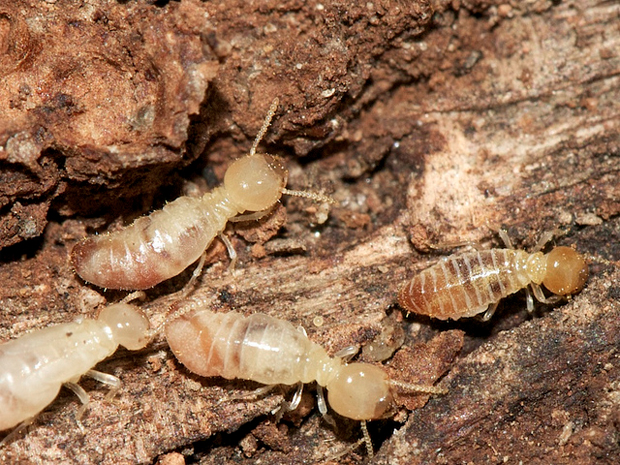
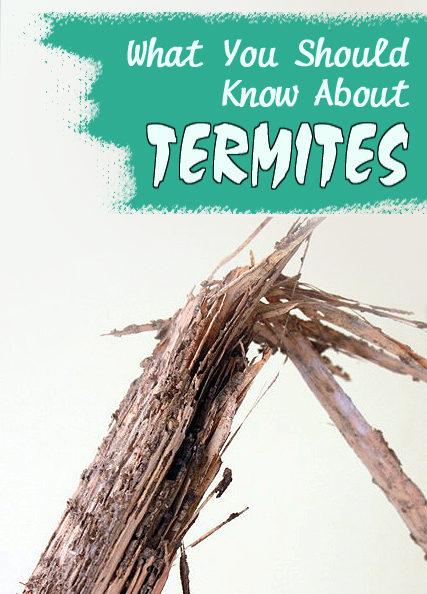
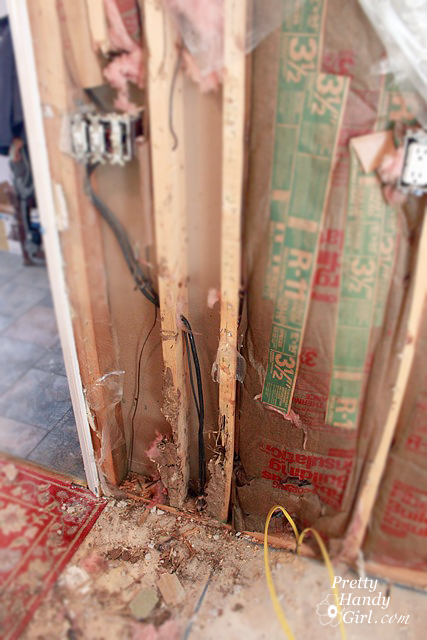
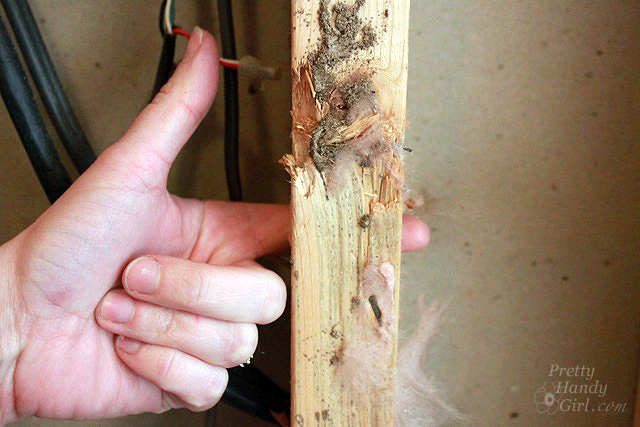
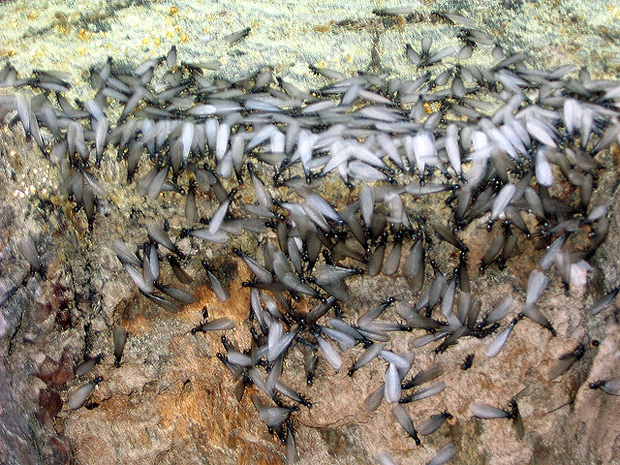
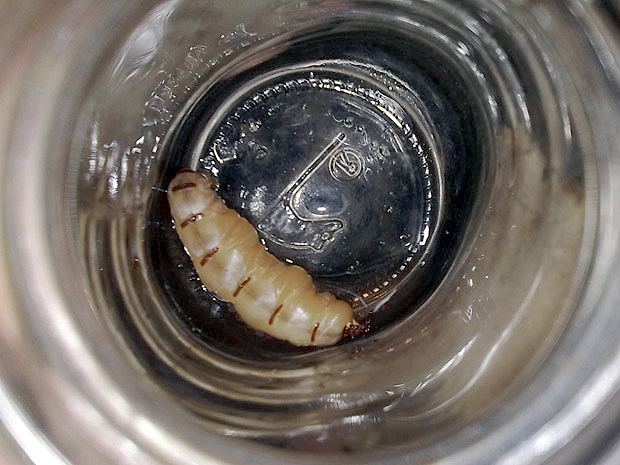
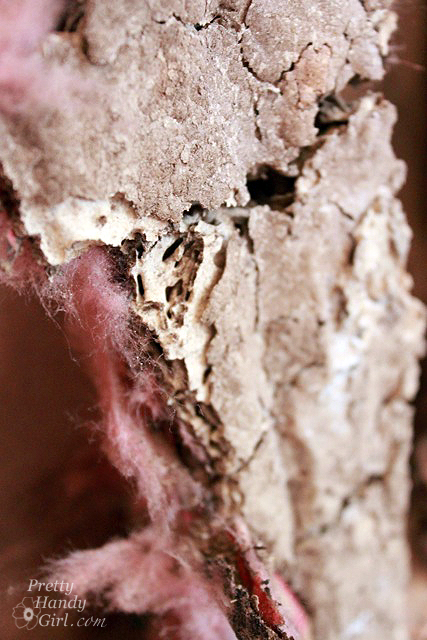
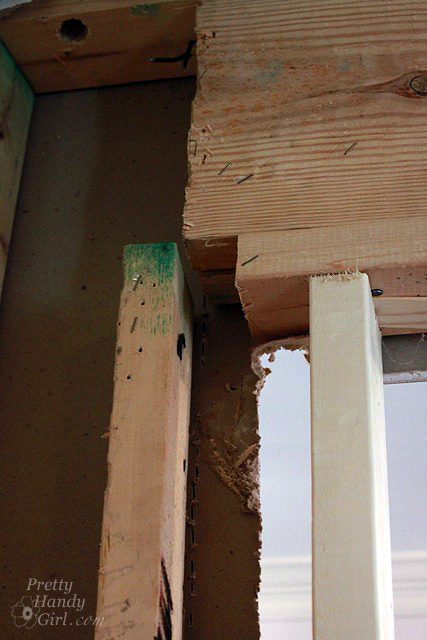
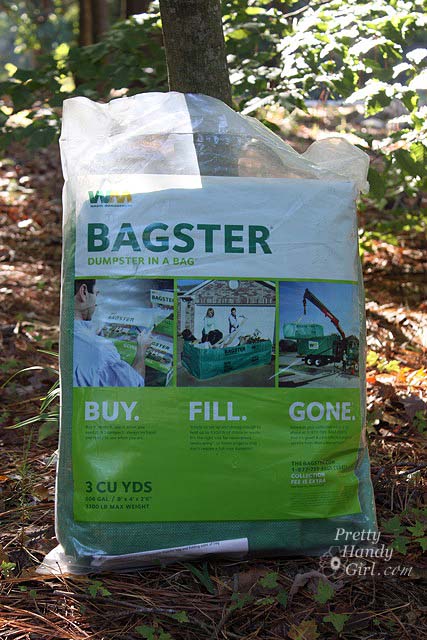
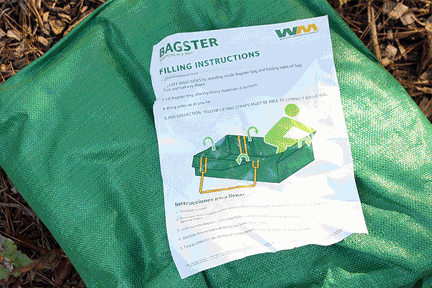
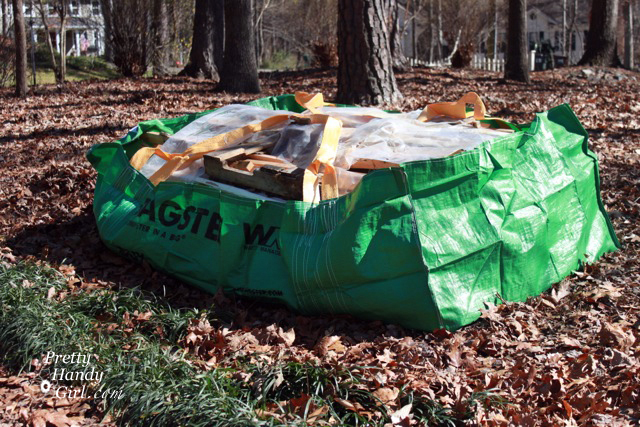



No but my friend has had them
I was cleaning and preparing one wall of my garage to put up shelves when I noticed mud tunnels and dirt smears. I pulled everything away from all the walls and found half a dozen damaged places. So far it looks like the termites are long gone and the damage is confined to mostly some baseboards and door trim, but I haven’t had it repaired yet so the assessment may get worse. I’ve been told that living in NC, if you don’t have termites yet, you will! Great post and comments; I’m going to look into the thermal imaging inspection also.
Oh no! I think I saw shavings like that along a wall today when we were tearing out carpet, in the huge space between the floor and baseboard. I didn’t think anything of it — until I saw your photos. Ugh.
thankfully no
When i sold my house I found it had termites and had to have it treated. Thankfully the damage was not too bad and mostly confined to the garage.
When I lived in an apt I had termites eat an old family heirloom table 🙁 Now I own a condo — we had to cover the building a few years ago and the damage was extensive.
We had terrible termites when we lived in Florida. They ruined the flooring in out house and we had to have part of it replaced. It was an old house. But we paid dearly for the damage.
I’ve never had termites and I’m so thankful for that!
Thank goodness we have never had termites before! That would be so awful!!
None
I live in an apartment, so I haven’t had them, at least that I know of. I would love to own a home someday, now I am educated to try to find out if the home is infested before buying. Thanks!
excellent post
We have not had any trouble with termites
We’ve luckily never had termite issues in our house. Though, I got to see termites when I was young when my dad found some in a pile of dead wood out in the pasture and decided to show them to me.
Termites. YUK! THanks for the info and the giveaway. Jo @ Let’s Face the Music